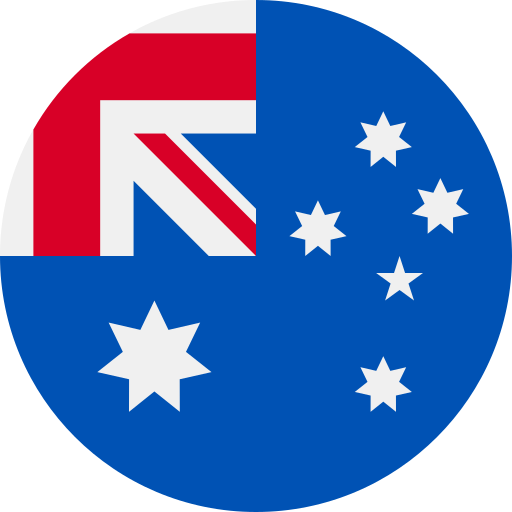Key Takeaways
- Colonial Origins: English was introduced in Australia through British colonization starting in 1788, quickly establishing itself as the dominant language influenced by various dialects from England.
- Indigenous Influence: Over 250 Aboriginal languages contributed to Australian English, enriching its vocabulary with unique words and concepts such as “kangaroo” and “boomerang.”
- Post-War Migration: The influx of immigrants after World War II diversified the linguistic landscape, introducing new expressions and vocabulary from Italian, Greek, Chinese, and other languages.
- Regional Dialects: Australian English features distinct regional accents that vary across areas, reflecting local identities and cultural nuances in everyday conversations.
- Contemporary Slang: Informal usage of slang terms like “arvo” for afternoon illustrates the playful nature of Australian English while fostering camaraderie among speakers.
- Cultural Impact: Literature, media, and arts significantly shape modern Australian English, integrating local vernacular into narratives that resonate with both national identity and global audiences.
Have you ever wondered how English became the dominant language in Australia? The history of English in Australia is a fascinating journey that reflects the nation’s cultural evolution and identity. From its roots in British colonization to the vibrant multicultural society we see today, understanding this transformation can shed light on how language shapes our communities.
As you dive into this exploration, you’ll discover not just the timeline of events but also the rich tapestry of influences that have molded Australian English. You’ll gain insights into how Indigenous languages, migration waves, and global trends have all played a role in creating a unique linguistic landscape. Ready to unravel this captivating story? Let’s embark on a journey through time and see how English has woven itself into the very fabric of Australian life.
Overview of English in Australia
English in Australia has a rich and complex history, reflecting the nation’s diverse cultural influences. Initially introduced through British colonization starting in 1788, English quickly became the dominant language. The early settlers brought with them various dialects from England, which laid the foundation for what would evolve into Australian English.
Indigenous languages also played a crucial role in shaping Australian English. Many words and phrases borrowed from Aboriginal languages enrich everyday conversation. Terms like “kangaroo” and “boomerang” are just a few examples that showcase this unique blend.
Migration waves throughout Australia’s history further diversified the linguistic landscape. Post-World War II immigration saw an influx of non-English speaking communities, introducing new vocabulary and expressions into the mix. As Australians embraced multiculturalism, elements from Italian, Greek, Chinese, and many other languages began integrating into local speech.
Global trends have influenced Australian English as well. Exposure to American media and culture has introduced new slang terms and pronunciations over time. While some traditional aspects remain intact, contemporary usage shows signs of adaptation to current global communication styles.
Today, Australian English stands distinct yet connected to its roots. The accent varies across regions—think broad accents from rural areas versus more neutral tones in urban centers—adding depth to its character. This evolution reflects not just linguistic changes but also shifts in social identity and cultural expression within Australia’s vibrant society.
Understanding this dynamic history provides insight into how language shapes culture and identity today. Whether you’re navigating conversations or seeking voice talent for projects that resonate with authentic Australian soundscapes, recognizing these nuances can enhance your connection to audiences both locally and globally.
Early Influences on English in Australia
English in Australia evolved significantly due to various early influences. The foundations laid during colonization set the stage for a unique linguistic landscape.
Indigenous Languages
Indigenous languages played a crucial role in shaping Australian English. With over 250 distinct Aboriginal languages, each contributed unique words and concepts. Terms like “kangaroo” and “boomerang” are just two examples of how these languages enriched English vocabulary. Additionally, many place names derive from Indigenous origins, reflecting cultural significance and connection to the land.
British Colonization
British colonization in 1788 introduced English as the dominant language. Settlers brought their dialects, which blended over time with local influences. Convict transportation also impacted language development; convicts often spoke in distinct dialects that influenced Australian vernacular. This melding created an informal speech style characterized by broad pronunciations and distinctive slang, laying the groundwork for what would become Australian English.
Exploring these early influences reveals how diverse linguistic elements combined to form a rich tapestry of communication that defines modern Australian identity today.
Evolution of English in Australia
The evolution of English in Australia reflects the nation’s rich and diverse cultural tapestry. As British settlers arrived in 1788, they brought their language, which quickly established itself as the dominant form of communication.
Colonial Period Developments
During the colonial period, English evolved through unique influences from convicts and settlers. Early Australian English developed distinct characteristics, marked by broad pronunciations and slang that reflected everyday life. Terms like “mate” became common, fostering a sense of camaraderie among speakers. The presence of Indigenous languages significantly enriched this emerging dialect; words such as “kangaroo” and “boomerang” entered common use, showcasing the local flora and fauna while honoring Indigenous heritage.
Post-Colonial Changes
Post-World War II saw substantial changes within Australian English due to increased migration from diverse communities. New linguistic elements emerged as immigrants introduced their languages and expressions into daily conversation. This multicultural influence diversified vocabulary, accentuating regional variations across Australia. Additionally, global trends shaped contemporary usage; American media played a crucial role in popularizing new slang and pronunciations that permeated everyday speech while maintaining traditional aspects.
Today’s Australian English boasts an array of regional accents and reflects ongoing shifts in social identity and cultural expression. Understanding this dynamic evolution not only highlights how language adapts over time but also illustrates its role in shaping connections within both local contexts and global conversations.
Contemporary Variations of English in Australia
Contemporary Australian English showcases a rich tapestry of regional dialects and vibrant slang that reflect the country’s diverse cultural influences. Understanding these variations offers insight into everyday communication across Australia.
Regional Dialects
Regional dialects play a significant role in shaping Australian English. From the broad, laid-back tones of Queensland to the more clipped accents found in cities like Melbourne and Sydney, each area has its unique flavor. You might hear distinct pronunciations or specific local terms that aren’t commonly used elsewhere. For example, “How ya goin’?” is often heard in informal settings and varies slightly depending on where you are. These dialects not only contribute to the richness of the language but also create a sense of identity for speakers within their communities.
Slang and Informal Usage
Slang permeates everyday conversation in Australia, adding color and character to interactions. Terms such as “arvo” for afternoon or “bikkie” for biscuit illustrate this creative linguistic flair. You might encounter phrases like “fair dinkum,” meaning genuine or real, which encapsulates an essential aspect of Aussie culture: honesty and straightforwardness. Informal usage extends beyond just words; it shapes how people connect with one another, fostering camaraderie through shared expressions.
You’ll find that this playful use of language makes conversations feel warm and inviting, encouraging friendly exchanges among strangers or friends alike. The dynamic nature of Australian slang reflects ongoing societal changes while maintaining ties to historical roots—an ever-evolving narrative shaped by influences from Indigenous languages, immigration patterns, and global trends.
Embracing these contemporary variations enhances your understanding of Australian culture while connecting you with its people through shared language experiences.
Cultural Impact on the English Language
Cultural influences have significantly shaped the evolution of English in Australia, reflecting the diverse experiences and identities within the nation.
Literature and Arts
Australian literature showcases a unique blend of voices that enriches the English language. Writers like Patrick White and Tim Winton weave local vernacular and cultural references into their works, creating narratives that resonate with both Australians and global audiences. Poetry, theater, and visual arts also embrace distinct Australian themes, using language to explore identity, landscape, and social issues. This artistic expression fosters a deeper understanding of culture while introducing new phrases and idioms into everyday conversations.
Media and Communication
Media plays a crucial role in shaping contemporary Australian English by influencing how people communicate. Television shows, movies, and radio programs often incorporate local slang, making it accessible to wider audiences. The rise of digital platforms amplifies this effect; social media allows for rapid exchange of ideas, facilitating linguistic innovation among younger generations. You might notice how popular series introduce terms or expressions that quickly become part of casual dialogue. This constant evolution keeps Australian English vibrant while reflecting shifts in societal trends.
These cultural impacts not only highlight Australia’s rich history but also illustrate how language serves as a bridge connecting communities through shared stories and experiences.
Conclusion
The journey of English in Australia is a remarkable reflection of the country’s diverse cultural landscape. From its roots in British colonization to the vibrant blend of influences today, Australian English continues to evolve. This dynamic language not only showcases unique regional dialects and slang but also serves as a testament to the rich stories and experiences that shape your identity.
As you explore this linguistic tapestry, you’ll find that understanding its history deepens your connection to Australia’s culture. It reveals how language fosters community ties while embracing change, making it an essential part of everyday life for all Australians. Embracing this evolution enriches conversations and celebrates the multicultural essence that defines modern Australia.
Frequently Asked Questions
What is the history of English in Australia?
The history of English in Australia began with British colonization in 1788. Initially introduced by settlers, English quickly became dominant, evolving through influences from convicts and Indigenous languages. Over time, it developed unique characteristics and slang that reflect Australian society.
How did Indigenous languages influence Australian English?
Indigenous languages significantly shaped Australian English by contributing unique terms like “kangaroo” and “boomerang.” They also influenced place names, highlighting cultural significance and connections to the land, which enriched the language’s diversity.
What role has migration played in shaping Australian English?
Post-World War II migration brought diverse linguistic elements into Australian English. Immigrants integrated their languages into daily conversation, creating new expressions and regional variations that further diversified the language landscape across Australia.
How does contemporary Australian English differ regionally?
Contemporary Australian English showcases distinct regional dialects—like broad tones in Queensland versus clipped accents in Melbourne and Sydney. These variations contribute to a sense of identity for speakers while reflecting cultural diversity across the country.
What impact do media and literature have on Australian English?
Media and literature play vital roles in shaping contemporary Australian English. Writers incorporate local vernacular into their works, while television and social media facilitate rapid linguistic exchange among younger generations, fostering innovation within the language.







